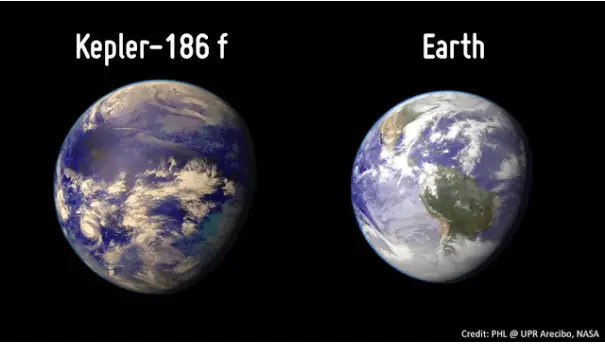
Introduction:
In a groundbreaking discovery that has captivated the scientific community and the public alike, astronomers have officially confirmed the existence of Kepler-186f, an Earth-like exoplanet located in the habitable zone of its parent star. This monumental find, made possible by NASA’s Kepler Space Telescope, has significant implications for the search for extraterrestrial life and the future of space exploration.
The Discovery:
Kepler-186f was discovered by NASA’s Kepler Space Telescope, which is dedicated to finding Earth-sized planets orbiting other stars. This exoplanet is situated approximately 500 light-years away from Earth in the constellation Cygnus. Kepler-186f orbits an M-dwarf star, also known as a red dwarf, which is smaller and cooler than our Sun. The planet’s location in the habitable zone—the region around a star where conditions might be right for liquid water to exist—makes it a prime candidate for the search for life beyond our solar system.
Characteristics of Kepler-186f:
Size and Composition: Kepler-186f is remarkably similar to Earth in size, with a diameter only about 10% larger than our planet. While its exact composition is still unknown, its Earth-like size suggests it is likely to be a rocky planet.
Orbital Period: The planet completes an orbit around its star every 130 days. Despite its close orbit, the cooler temperature of its parent star means Kepler-186f receives about one-third of the energy that Earth receives from the Sun.
Temperature: Due to the star’s lower luminosity, Kepler-186f lies within the habitable zone where temperatures could potentially allow for the presence of liquid water, depending on its atmospheric conditions.
Potential for Life:
Kepler-186f’s position within the habitable zone is particularly exciting because it raises the possibility that the planet could have liquid water, a critical ingredient for life as we know it. While the presence of water and an atmosphere on Kepler-186f has yet to be confirmed, its Earth-like characteristics make it a compelling target for further study in the search for extraterrestrial life.
Implications for Astronomy:
Search for Life: The discovery of Kepler-186f reinforces the idea that there could be many more Earth-like planets in our galaxy. It provides a valuable target for future missions aimed at detecting signs of life, such as those involving advanced telescopes capable of analyzing the planet’s atmosphere.
Planetary Science: Studying Kepler-186f will enhance our understanding of planetary formation and the conditions necessary for habitability. This knowledge could offer insights into the potential for life on other planets and inform our search for similar worlds.
Future Exploration:
NASA and other space agencies are prioritizing the study of Kepler-186f. Planned missions and advanced observatories, such as the James Webb Space Telescope, will focus on detailed observations of the planet’s atmosphere, climate, and potential biosignatures. These efforts are crucial for gathering more information about this intriguing exoplanet.
Public and Scientific Excitement:
The announcement of Kepler-186f has ignited widespread interest both within the scientific community and among the general public. Scientists are eager to explore this distant world further, while the public is fascinated by the possibility of another habitable planet. This discovery has rejuvenated interest in the search for extraterrestrial life and the broader exploration of the cosmos.
Conclusion:
The official confirmation of Kepler-186f, an Earth-like exoplanet situated in the habitable zone of its star, represents a monumental step forward in our quest to find other worlds that might harbor life. As astronomers and scientists continue to investigate this remarkable planet, we move closer to understanding whether we are alone in the universe. This landmark discovery not only deepens our knowledge of the cosmos but also inspires hope and anticipation for future explorations and the potential to uncover the secrets of life beyond Earth.
Reference: NASA
